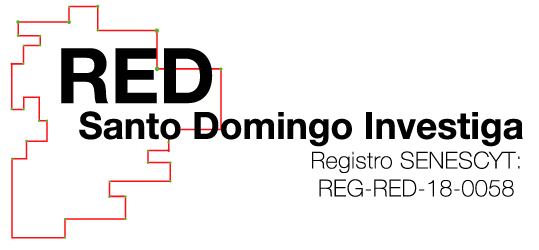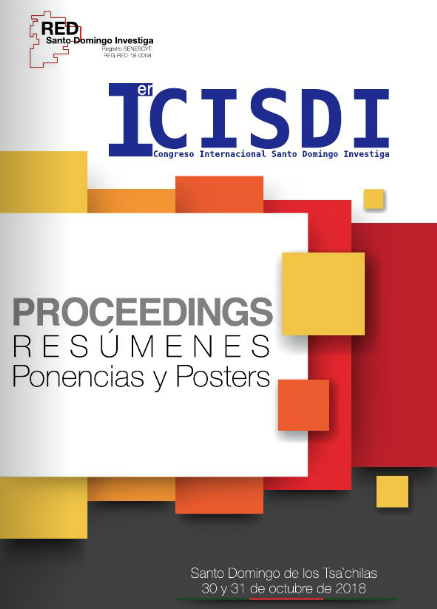MODELO DE GESTIÓN INTEGRAL PARA LA SALVAGUARDA DEL PATRIMONIO INMATERIAL, TEJIDO DEL SOMBRERO DE PAJA TOQUILLA DE MANABÍ – PILE Y PICOAZÁ.
INTEGRAL MANAGEMENT MODEL FOR THE SAFEGUARDING OF THE INTANGIBLE HERITAGE, WEAVING OF THE STRAW HAT OF MANABI - PILE AND PICOAZA.
Juan Carlos Macías Lucas
Esta dirección de correo electrónico está protegida contra spambots. Necesita activar JavaScript para visualizarla.
Ministerio de Cultura y Patrimonio
Escuela Superior Politécnica Agropecuaria De Manabí MFL
Juan C. Villacreses Viteri
Esta dirección de correo electrónico está protegida contra spambots. Necesita activar JavaScript para visualizarla.
Escuela Superior Politécnica Agropecuaria De Manabí MFL
Marcos Labrada Ochoa
Esta dirección de correo electrónico está protegida contra spambots. Necesita activar JavaScript para visualizarla.
Instituto Nacional de Patrimonio Cultural – INPC
Resumen
La presente investigación tiene Como objetivo general diseñar un “Modelo de gestión integral para salvaguardar el Patrimonio inmaterial, el tejido de sombrero de paja toquilla en la provincia de Manabí, en las comunidades de Pile y Picoazá”. Estos dos sectores presentan problemas sociales, económicos, culturales y ambientales además se evidencia la carencia de desarrollo turístico, asociatividad, liderazgo, planeación, organización y abandono interinstitucional esto es recreado constantemente por el sentir de las comunidades y de los grupos en función de su entorno, y la interacción con la naturaleza. Los tejedores son el principal eslabón de la cadena de valor, la calidad de su trabajo depende el resto. En la actualidad existe una reducción del número de tejedores en un 30% promedio en estos últimos años debido a que las actuales generaciones no conciben un ingreso significativo al elaborar un sombrero fino, por ello se ven obligados a buscar otras fuentes de ingresos. Para ello ha sido fundamental poner en valor todas las iniciativas y actuaciones encaminadas a la investigación, documentación, promoción, transmisión, formación y difusión de las manifestaciones inmateriales de la cultura, y el protagonismo de las comunidades. La metodología utiliza métodos, teóricos de análisis y síntesis establece cinco fases la primera etapa consiste en determinar el marco legal en relación al patrimonio inmaterial en torno al tejido de sombrero de paja toquilla, la segunda etapa consiste en el diagnostico turístico, socioeconómico, cultural y ambiental de las comunidades (Pile y Picoazá) la tercera etapa se analiza metodologías, procesos, modelos que contribuyan a la consecución de un modelo de gestión integral al patrimonio inmaterial, la cuarta etapa se estructura el modelo de gestión integral que responda a los principales procesos e indicadores en la salvaguarda del patrimonio inmaterial y la quinta y última etapa se procede a validar este modelo de gestión integral que potencialice la salvaguarda del patrimonio inmaterial. Dentro de los resultados esperados se busca el involucramiento de las comunidades, sensibilización y participación comunitaria en ambos territorios (Pile y Picoazá), a la vez, contribuiría a fortalecer el papel de la sociedad civil como actor en la gobernanza, y promocionar un crecimiento sostenible e inclusivo al producto estrella de este país, fortaleciendo las capacidades organizacionales y facilitando su participación en las acciones directas, promoviendo y apoyando iniciativas sostenibles, inclusivas e innovadoras de desarrollo socio-económico.
Palabras claves: modelo de gestión, patrimonio inmaterial, desarrollo comunitario, gestión organizacional, iniciativas sostenibles.
Summary
This research general objective is to design a "model of integrated management to safeguard intangible heritage the fabric of toquilla straw hat in the province of Manabí, in the communities of Pile and Picoazá". These two sectors have social, economic, cultural and environmental problems also evidenced the lack of tourist development, associativity, leadership, planning, organization and inter-agency ditching this is recreated constantly by the feel of the communities and groups depending on their environment, and the interaction with the nature. The weavers are the main link in the value chain, the quality of its work depends on the rest. Currently there is a reduction in the number weavers in a 30% average in recent years since the current generations do not conceive a significant income to develop a fine hat, for this reason they are forced to seek other sources of income. This has been fundamental to highlight all initiatives and actions to research, documentation, promotion, transmission, training and dissemination of the intangible manifestations of culture, and the role of communities. The methodology uses methods, theoretical analysis and synthesis establishes five stages the first stage woven from toquilla straw hat, the second stage consists in the diagnosis, socio-economic, cultural and environmental communities (piled up and Picoazá) the third stage discussed methodologies, processes and models that contribute to the achievement of a model of integral management to the intangible heritage, the fourth stage is structured the model of integral management that responds to the main processes and indicators in the safeguard of the intangible heritage and the fifth and last stage is proceeded to validate this model of integral management that potentializes the safeguarding of the intangible heritage. Among the expected results is the involvement of communities, awareness and community participation in both territories (Pile and Picoazá), at the same time, it would contribute to strengthen the role of civil society as an actor in governance, and promote sustainable growth and inclusive to the flagship product of this country, strengthening organizational capacities and facilitating their participation in direct actions, promoting and supporting sustainable, inclusive and innovative initiatives of socio-economic development.
Keywords: management model, intangible heritage, community development, organizational management, sustainable initiatives.




